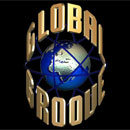Jerome Moross was born in New York on August 1, 1913. Beginning piano lessons at age five and composing by age eight, Moross was, in 1924, the youngest child ever to gradua te from a New York City Public School up to that time.He graduated from New York University School of Music at eighteen and as a senior there, concurrently held a Juilliard conducting fellowship. Moross was awarded Guggenheim Fellowships in 1947 and 1948.
Paeans, the first of his concert pieces to be performed when Moross was seventeen, was conducted by Bernard Herrmann and soon after published by Henry Cowell. Performances and commissions followed. Henry Cowell played THOSE EVERLASTING BLUES (1932), and the composer wrote BIGUINE (1934) for Charles Weidman. At twenty-four, Moross was the youngest composer ever commissioned by the Columbia Composers Commission. A tall story for orchestra resulted and was first performed by CBS radio. Sir Thomas Beecham premiered SYMPHONY NO. 1 at the Seattle Symphony in 1943. Other performances followed, and CBS radio aired one of the several by Alfred Wallenstein and the Los Angeles Philharmonic.Moross wrote the first of his five ballets, PAUL BUNYAN: AN AMERICAN SAGA, for Charles Weidman. The four others, including the best known, FRANKIE AND JOHNNY, were commissioned by Ruth Page of the Chicago Ballet. FRANKIE AND JOHNNY has also been performed as an orchestral suite. THE LAST JUDGEMENT, a ballet of ten dances, is arranged for piano four-hands as well as for orchestra. Moross loved writing for the theatre and his earliest stage work was a revue, PARADE, produced on Broadway by the Theatre Guild when the composer was 21. In the late 1930s Moross began work with John Latouche on BALLET BALLADS which opened in the spring of 1948 at ANTA, moving to Broadway in May of that year. Consisting of three separate pieces without any spoken dialogue, (the fourth piece was not done), "the idea was to so mix the singing and dancing that you didn't know where the singers began or where the dancers ended" said Moross in a 1978 interview. Their next show, THE GOLDEN APPLE, was produced in 1954 and also had no spoken dialogue. Both shows received rave reviews and THE GOLDEN APPLE won the 1954 Drama Critics Awards. After Latouche's death, Moross collaborated with Edward Eager on GENTLEMEN, BE SEATED!, a musical about the Civil War. UNDERWORLD, a show set in 1920s Chicago, was never completed and consists of only seventeen songs, with lyrics by John Hollander and Lester Judson. Premier Recordings released eight of these songs on its CD, 'Broadway Dreams'. The wide spectrum of themes and styles in these shows demonstrates the composer's sharp ear for the diversity of American sounds, and his versatility. Moross' music was instinctively 'American' and remained tonal and melodic throughout his career. He loved folk tunes and popular songs of his day and in his formative years continually sought out indigenous music. An experience his younger brother enjoys recounting is their going off to Coney Island to listen to carousel music.Along with writing musicals, ballets and concert works, Moross worked in Hollywood, first as an orchestrator for innumerable films in the late 1930s adn 1940s, and then beginning in 1948, as a composer. Of his seventeen film scores, THE BIG COUNTRY (1958) is best known and now recognized as a 'Western' classic.The score won an Academy Award nomination. His 'Western' style was shaped largely by his first experience in the Great Plains and far west which occurred in November 1936 when he travelled by bus from Chicago to Hollywood. In a 1979 interview with John Caps he describes it as similar to a religious experience. In a 1973 letter to Christopher Palmer he said, "...as we hit the Plains I got so excited that I stopped off in Albuquerque (which at the time was a small town of about 35,000 people) and the next day I got to the edge of town and walked out onto the flat land with a marvellous feeling of being alone in the vastness with the mountains cutting off the horizon. When it came to writing the Main Title of the film, [The Big Country], I wrote the string figure and the opening theme almost automatically."
Read more on Last.fm. User-contributed text is available under the Creative Commons By-SA License; additional terms may apply.

